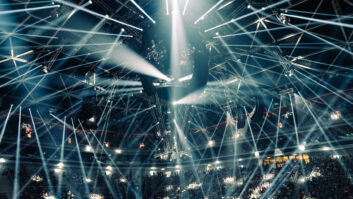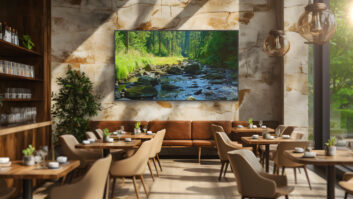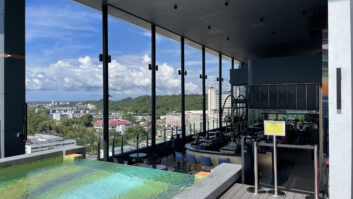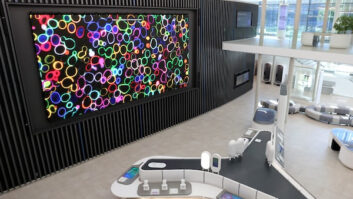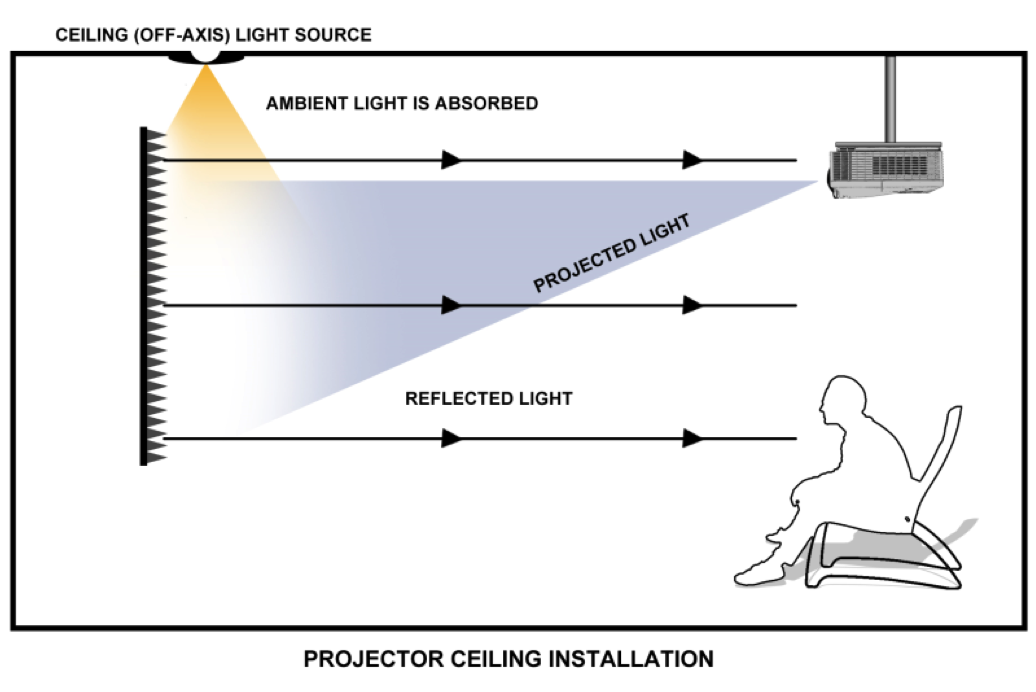
How does an ‘ambient light-rejecting’ material actually ‘reject’ an indirect light source – and why should we love the concept, asks Elite Screens marketing manager Dave Rodgers.
The term ‘ambient light-rejecting’ describes a projection screen feature that prevents ambient light from washing out an image. Some AV purists hate the use of the word ‘rejecting’, and technically they are correct: ALR screens either absorb or divert ambient light away from the viewer’s field of vision. However, the term gives customers an easy mental image.
To AV installers, ambient light is any atmospheric light that originates from an indirect source of luminance indoors or outdoors, naturally or artificially occurring. Basically, it’s any light source other than your projector that threatens to impair your image’s aesthetics. Also, light-coloured walls, ceilings and flooring can all contribute to ambient light problems and negatively affect video performance; so a room lined with white marble floors, alabaster walls and a whitewashed ceiling is far from ideal for getting the best out of your projector screen.
So how do we ‘reject’ ambient light, particularly if we don’t have 100% control over environmental lighting? To some degree, a brighter projector does help to drown out a little more of the milky white glare of indirect room lighting, but it does bring a negative effect as well. As much as you want a bright, colourful image, you don’t want it too bright or the contrast suffers. An excessively bright screen can also cause eye discomfort.
Screen types
Instead of thinking about a brighter projector, consider a speciality projection screen. Ambient light-rejecting screens come in two basic formats: retro-reflective or angular-reflective. According to the laws of reflection, the incident ray, the reflected ray, and the normal to the surface of the mirror all lie in the same plane; and the angle of reflection is equal to the angle of incidence. However, ALR surfaces may not perform exactly in this way because of how they are constructed, using either microstructures or multi-layered optical filters. A normal white projector screen has ‘diffusion uniformity’, scattering the projected light to provide uniform brightness over the full 180° of the projection angle. However, it scatters all light, not just the projected signal, so high levels of ambient light will wash out the image.
Angular-reflective means that light reflects off the surface at precisely the opposite angle of incidence, exactly as the laws of reflection describe. This type of screen is the preferred model for commercial applications and also widely popular with residential applications. The material prevents full diffusion from occurring, to provide greater control over the washout effects of ambient light. The focused reflectivity rewards viewers with a bright projected image that achieves a superb level of colour temperature. At the same time, off-axis light is diverted away from the viewer’s range of visible perception. Its multiple layers of diffusion material further negate the washout effects of ambient light, while also enhancing black levels for sharp image clarity.
Retro-reflective means that the material will reflect back the image direct to the light source. This limits the options of projector placement but its performance levels typically make it the favourite of home theatre aficionados.
Angular precision
A retro-reflective ambient light-rejecting screen essentially absorbs ambient light away from the viewer’s field of vision. The screen does this by means of an active microstructure design, which reflects the projected image directly into the viewer’s field of vision while absorbing the majority of all other indirect light (see diagram).
With retro-reflective materials, light coming from the projector must hit the material in direct alignment with the screen’s level centre without being off by more than a 5° angle. Any vertical off-axis angle of projection greater than that will be reflected off at so extreme an angle that it will not come into the viewer’s field of vision.
And why should you love the concept of ALR? It enables the viewer to maximise the effects of optimal contrast and even ISF-certified colour temperature. It enhances brightness while filtering out ambient light. This creates a realistic image that allows 4K content to be appreciated in its full glory with the lights on or off. Colours look stronger, and the sharpness and image clarity of UHD/4K content are more defined.
